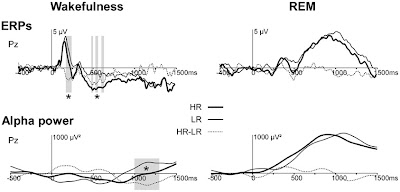The purpose of this essay is to look at possible boundaries between science and pseudoscience as well as a couple of interesting observations as they apply to psychiatry. One of his key concepts is that the lines of demarcation are not necessarily sharp and the variables are not necessarily linear. He uses the above graph of empirical knowledge versus theoretical understanding as an example. Starting in the upper right corner of the diagram we have hard sciences with particle physics given as the most clear cut hard science. I like to think about my undergraduate chemistry experience as being hard science. Even introductory chemistry exposes the student to an amazing array of facts, observations, and theories that are incredibly accurate. From there, chemistry majors build on their ability to measure specific compounds, synthesize them and study the theory in Physical Chemistry. I don't think that there is any doubt that chemistry as a field is not too far removed from particle physics in terms of empirical knowledge or theoretical understanding. String physics has much theory but is low in terms of empirical support. He refers to evolutionary psychology, scientific history and Search for Extraterrestrial Intelligence (SETI) as a "proto-quasi science" cluster with decreased amounts of theory and empirical support. Other fields like the so-called "soft sciences" of sociology, economics, and psychology have a fair amount of empirical knowledge but less theoretical understanding. The true pseudosciences are in the zone with astrology, HIV denialism, and Intelligent Design. From the history of psychiatry - Freudian psychoanalysis and Adlerian psychology would also be included here but there is also a list of theories from general medicine and surgery that would also qualify.
In psychology and psychiatry a central philosophical problem is the so-called hard problem or the explanatory gap between the neurobiology of conscious states and subjective experience. This is exactly where psychiatry resides. A lot of political criticism of psychiatry involves the ability to parse these states and accurately classify different conscious states. Resolving the hard problem would move psychiatry and psychology firmly to the right in the demarcation diagram but probably not nearly as far as particle physics or maybe not even as far as molecular biology.
The relevant question for me of course is where psychiatry fits on the plane of empirical knowledge x theoretical understanding. What about medicine in general? Could we plot a plane of medical and surgical sub specialties on this plane instead of the hard and soft sciences? Does medicine and surgery have theories or practices end up in the same zone as Freudian psychoanalysis. Of course they do. A great example from my days as a medicine intern was highlighted by Ghaemi as "The cult of the Swan-Ganz catheter." In the places where I trained, anyone with moderately serious cardiopulmonary problems was at risk for placement of a Swan-Ganz catheter. The actual person inserting the catheter could be a medicine resident, a cardiologist, or an anesthesiologist. Since the intern is responsible for doing the initial history and physical exam, I witnessed the placement of a large number of these catheters. Once placed they gave an impressive number of parameters on ICU monitors. We were routinely grilled about the meaning of these parameters by attending physicians on rounds. It all seemed very scientific. The cult of the Swan-Ganz catheter was subsequently disproved by randomized clinical trials. This standard of care from the 1980s and 1990s disappeared much faster than Freud.
The best way to plot medicine and psychiatry on Pigliucci's empirical knowledge versus theoretical understanding plane would be to consider the clinical basic sciences taught in the first two years of medical school. In my experience that was anatomy, neuroanatomy, histology, microbiology, biochemistry/molecular biology, genetics, pathology, physiology, pharmacology, epidemiology, and statistics. Practically all clinical specialties carry these basic sciences forward in one form or another. The research literature in any particular specialty in full of theory and techniques from these basic sciences. The psychiatric literature cuts across all of the basic sciences in the same way as other specialties. At the minimum, some of psychiatry will be at the level of molecular biology on the diagram in some areas and at the level of psychology in others. Hopefully the unscientific theories will be relegated to the lower left hand corner of the diagram as unscientific and not stand the test of time.
I think that Professor Pigliucci's conceptualization is a very useful one. I expect that he will continue to refine these ideas. I think that measurement precision and categorization may be important dimensions to add to these concepts. As Merskey has pointed out both the phone book and the periodic table are much more accurate forms of categorization than any scheme of medical classification. I think that probably says a lot about the underlying scientific dimensions and how measurement is done.
George Dawson, MD, DFAPA
Ghaemi SN. A Clinician's Guide to Statistics and Epidemiology in Mental Health. (2009) Cambridge University Press, Cambridge, UK. p. 91.


